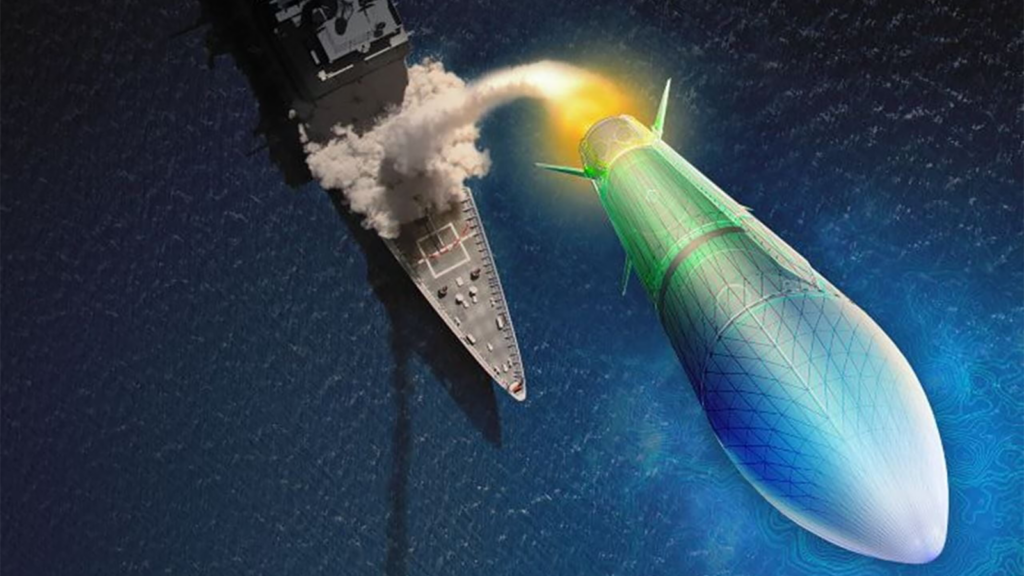
Raytheon Missiles Defense is one of two firms selected by the Missile Defense Agency as one of the companies to develop and test the Glide Phase Interceptor, the first system specifically designed to defeat hypersonic threats. (Raytheon graphic)
WASHINGTON — The Missile Defense Agency “shortly” will move from studying designs for its new Glide Phase Interceptor (GPI) for defending against hypersonic missiles to actually developing hardware, MDA Director Vice Adm. Jon Hill said today.
“We’re ready to transition over to technology development” following a risk review by the Defense Department’s Office of Research and Evaluation, he told the Center for Strategic and International Studies (CSIS).
The GPI program is aimed at knocking down hypersonic missiles during the glide phase of flight when it’s skimming space — the longest phase of flight between launch and “terminal” phase — before they reenter the atmosphere. GPI will include new interceptors as well as modifications to the Aegis Weapon System needed to launch them. MDA has been attempting to fast track development due to increasing worry from Pentagon officials and lawmakers about the hypersonic capabilities of China and Russia, which Hill called “a really tough threat set.”
MDA in its fiscal 2024 budget request asked for $209 million for “early risk reduction.”
MDA is developing “high fidelity models” of GPI under Other Transaction Authority contracts with Raytheon Technologies and Northrop Grumman awarded last June. Hill said the current game plan is to “down-select” to one vendor after preliminary design review for both is completed.
For now, the next step, he said, is to take the design work and analysis to the Joint Requirements Oversight Council (JROC) to get approval of the technical parameters for GPI hardware development.
“That is in its analysis phase right now. … We’re just getting ready to go to a JROC next week, and then we have a MDEP, Missile Defense Executive Board, after that, and we’ll transition over to that hard technical development,” he elaborated. “So that’s when you start to get into real hardware components and those sorts of things to fly in that environment, while we’re also continuing to do science technology to make sure that we can actually operate in that glide phase.
“Operating in space is different than operating down low in the atmosphere, different when you’re on the edge of the atmosphere where these things glide,” he added.
Hill said that MDA plans to first deploy the GPIs at sea. “We’re also in parallel looking at what we can do for for deployed air bases and Army maneuver force.”
Boeing buys GKN factory, ending dispute over F-15, F/A-18 parts
Through the deal, Boeing’s litigation with supplier GKN Aerospace will be dropped, and the aerospace giant will take possession of a St. Louis-area factory it used to own.


























